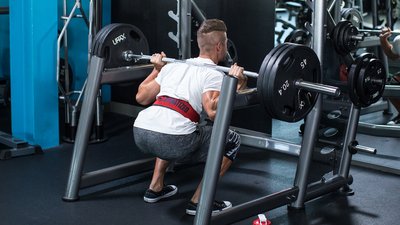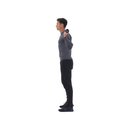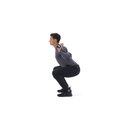Across 34 grinding sets, this personal trainer and Dymatize-sponsored athlete shows us the seriously hard work that enables him to sport a defined physique year-round. If you like his approach here, watch his athlete profile video—then pair this workout with his Superset Arm Workout and Pull-Day Challenge to build an upper body to match your lower half!
Since the bigger muscles in your legs require more rest in between heavy sets, this workout will take about an hour from start to finish. You'll need longer rest periods of 1-3 minutes at the beginning of the workout, but as you drop down to isolation exercises, the rest drops to 30-60 seconds. If the workout as written is a bit beyond your reach, cut back a set or two on the big exercises, but aim for the same rep ranges.

BodyFit
$6.99/month- 2,500+ expert-created single workouts
- 3,500+ how-to exercise videos
- Detailed workout instruction
- Step-by-step workout tips
- Training at gym or at home
- Access to Workout Plans
- Access to Bodyfit App
- Store Discounts
Already have a Bodybuilding.com account with BodyFit? Sign In

What comes with BodyFit?

- Instructional Videos
Don't risk doing a workout improperly! Avoid injury and keep your form in check with in-depth instructional videos.

- How-to Images
View our enormous library of workout photos and see exactly how each exercise should be done before you give it a shot.

- Step-by-Step Instructions
Quickly read through our step-by-step directions to ensure you're doing each workout correctly the first time, every time.
Mike's Technique Keys
Back Squat: Hildebrandt starts his workout with the bar on his back, pushing heavy weight for relatively low reps while his legs are fresh.
"We need to make sure that our resistance is up there," explains Hildebrandt. "We want to move as much weight as we possibly can in order to add size and strength."
Rest a minimum of 1-2 minutes in between sets. It's a must if you want to keep the intensity up for each and every set. Use that time to mentally prepare yourself, which Hildebrandt says is just as important as preparing physically.
"It's very important to go into each set of squats with the right mentality to absolutely crush it!" he says.
Leg Press: The leg press is a great follow-up to the back squat because it allows you to safely add more volume as you continue to target your quads, hamstrings, and glutes. Hildebrandt uses a high training volume for this exercise: 5 sets of 12 reps.
"Five sets may be more than you're accustomed to on a leg workout," he explains, "but we're trying to target those compound movements as effectively as possible."
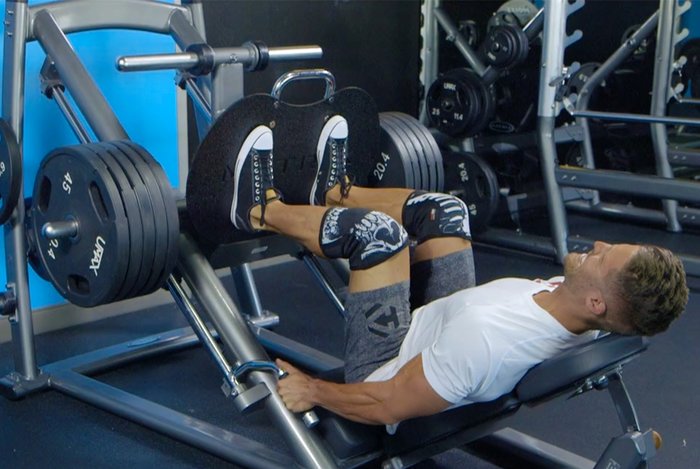
Leg Press
Of course, higher volume increases the intensity of the workout, so proper form is critical. Make sure your feet are aligned straight up and down, and for this workout, Hildebrandt recommends working with your feet hip-width apart. Center your feet on the platform, and press evenly as you lift the weight.
Walking Double Lunge: This dynamic, total-body movement is where this leg workout shifts into higher rep ranges—and you'll really start to feel the work piling up.
Complete 20 reps of walking double lunges, adding an extra down-and-up on every single rep. If you've never done a double lunge, you've been missing out. As Hildebrandt puts it, the extra movement on each rep "allows us to dig deep into the muscle tissue and really start to build up some definition."
Lunges are a dynamic exercise, challenging the muscles around your hips, knees, and even ankles to help develop better balance and stabilization along with definition. Keep your knee behind your toe as you step forward, and focus on keeping your torso upright as you move. Then, drive through the heel of the foot every time you come up.
Dumbbell Romanian Deadlift: Moving into more isolated exercises, the dumbbell Romanian deadlift is Hildebrandt's first choice for targeting the hamstrings. But it's all in how you do it.
Maximize the hip hinge in this movement, making sure those hamstrings really stretch at the bottom of each rep. Make sure your back stays straight the entire time and focus on driving the hips back. A slight bend in the knees will help with range of motion, but your back should remain straight the entire time to avoid placing unneeded stress on the lower back.
This is a more isolated movement than, say, squats, but it's still heavy and complex enough to demand a rest of 1-2 minutes between sets.
Leg Extension: The reps start to really add up with this isolation exercise—and as Hildebrandt warns, you're going to start feeling the burn. He leaves the rep range open at 15-20 because he wants you to try to find that point of muscle failure where your quads just can't take it anymore.
"You may have to stop before you hit 20," he explains, "but if you get to 20 reps and you don't feel absolutely exhausted, it's time to up your weight on this exercise."
It's easy to let momentum take over on this exercise, so pause and make sure you have a strong contraction at the top of each and every rep. The leg extension is all about isolating the quads, which you can only do with a full stretch at the bottom and a solid contraction at the top. Rest for 30-60 seconds between sets, allowing the quads enough time to recover before hitting the next set hard.
Seated Leg Curls: As with the leg extensions, you'll use a higher rep range on the seated curl to balance out the front and back of the leg. And since we're still solidly in isolation mode, avoid the temptation to go heavy or let momentum take over.
"We want control here!" says Hildebrandt. "Each and every rep should be a strong contraction at the bottom with a squeeze and a good stretch at the top."
A key tip he offers is to make sure you flex your toes back during the curl. The dorsiflexion at the ankle prevents the calf from assisting on the curl and allows you to better engage your hamstrings. Keep your rest time at 30-60 seconds, and maintain a neutral spine and upright posture throughout the curl.
Superset: Seated Calf Raise with Donkey Calf Raise
Hildebrandt is known for his attention to detail, and this killer superset finisher is just the thing to bring out definition in those calves. By moving from a bent knee position to a straight knee position, you target all muscles in the calf complex for complete calf development. Don't be afraid to pack on weight just because this is a smaller muscle group—at the end of 20 reps you should feel like you have nothing left in the tank.
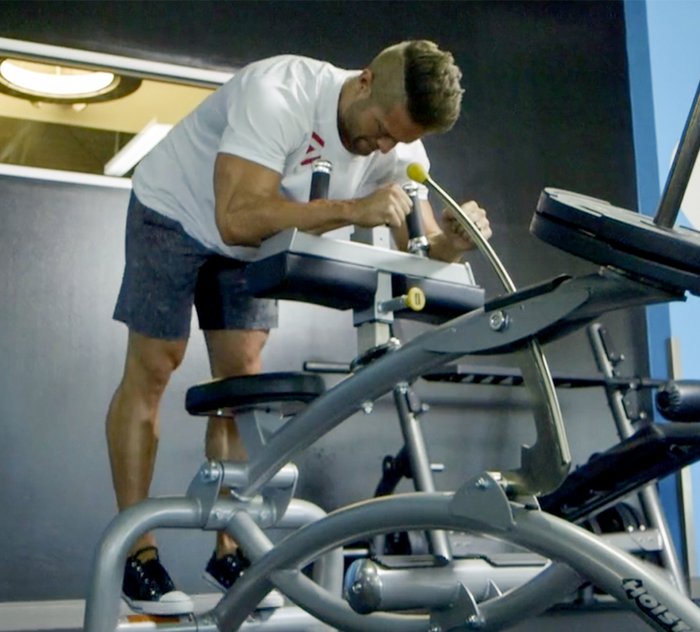
Donkey Calf Raise on Seated Calf Machine
This is a superset, so immediately after the seated raises, hop off and go into the donkey calf raise.
"Calves are accustomed to a lot of use between walking and running and all the stress that we put on them," says Hildebrandt, which is why he targets higher rep ranges to develop those muscles.
You may find yourself doing an additional 20-30 reps of the donkey raise for a total of 40-50 reps on each superset. Rest 30-60 seconds between each superset.
You can do this workout up to two times per week with at least 72 hours of recovery between workouts. As Hildebrandt warns, you're producing a lot of damage on some major muscle groups, so make sure your recovery is on point—proper nutrition and plenty of sleep so your body can repair and recover before you come back and hit this workout again.


